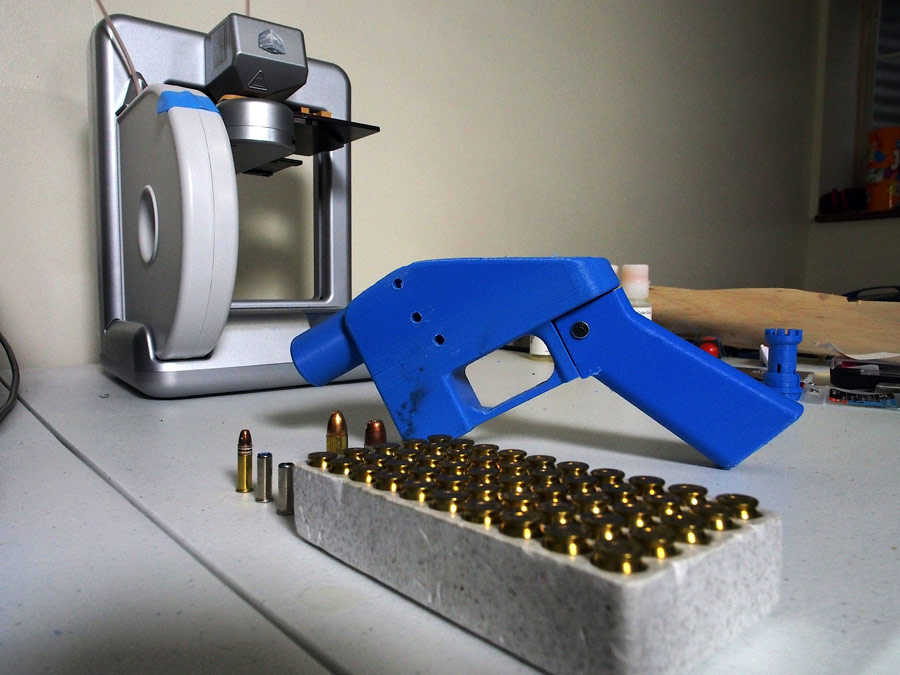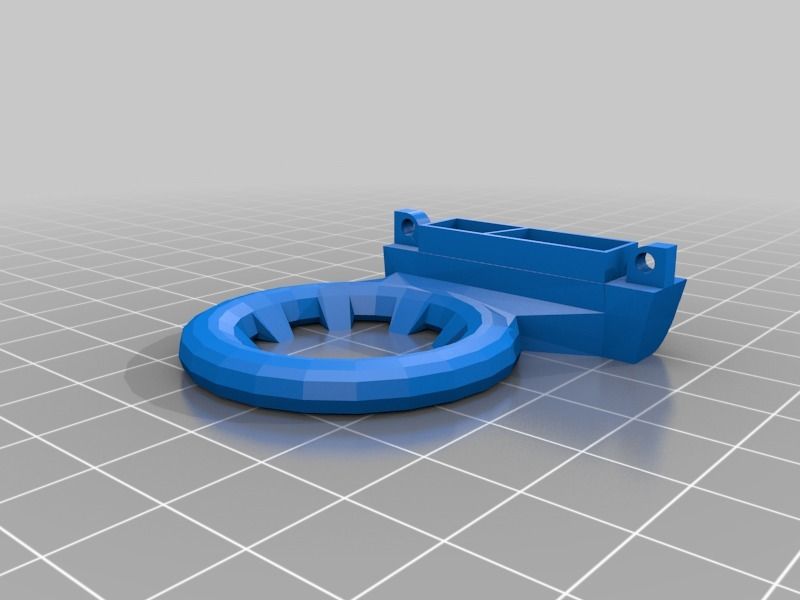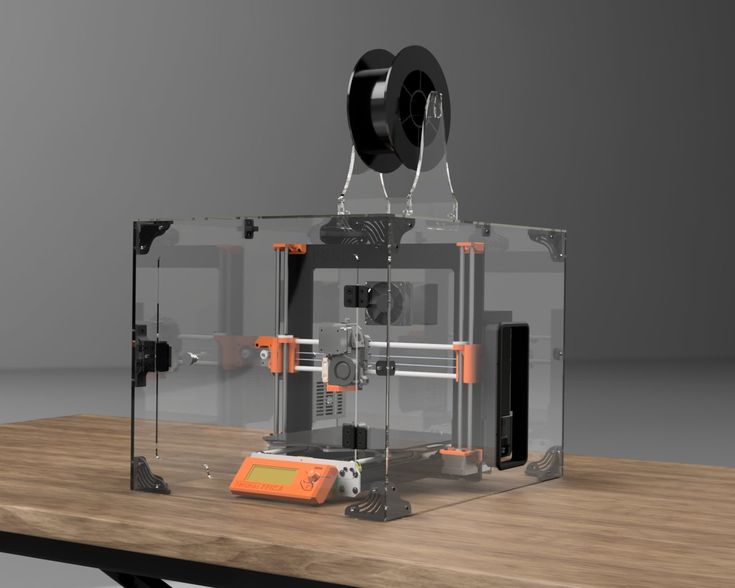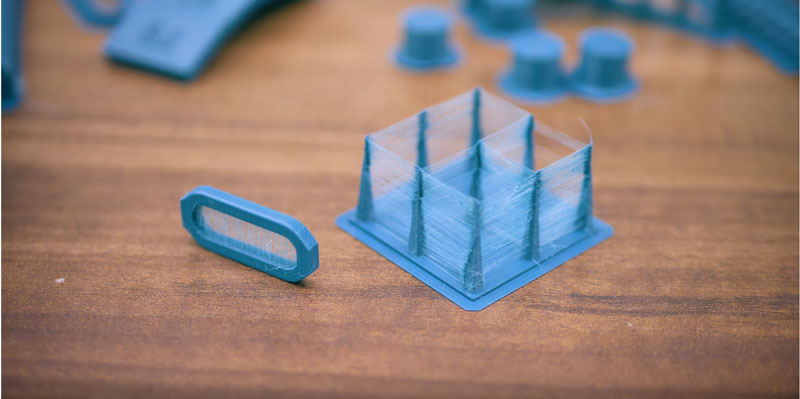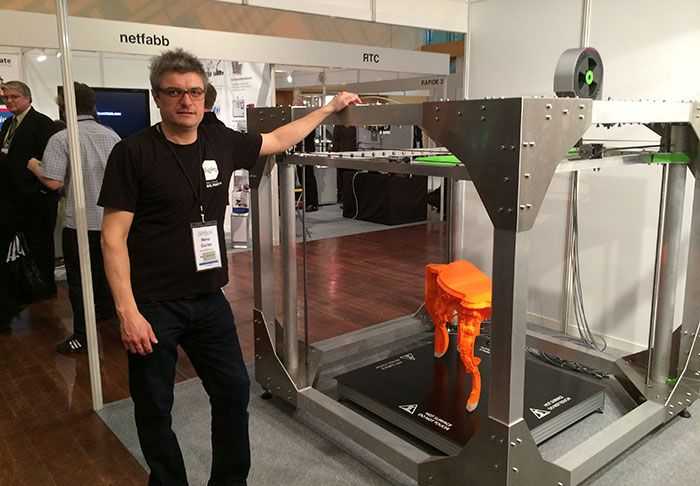3D printer plans for guns
3D printed guns - what kind of gun can be 3D printed and how it works
3D printing, a considerable shake-up in the gun industry
Advanced customization and low production costs are among the advantages of 3D printing for making firearms. Note that it is possible to 3D print gun parts such as the magazine or the handle. 3D printing the most important parts like the chamber or the barrel is a challenge.
The most credible option for homemaking a gun is by crafting a lower receiver as demonstrated in the Wired video below. The machine capable to turn an aluminum block into a gun part is a lot closer to a milling machine than a 3D printer.
To prove their expertise, some companies like Solid Concepts made metal 3D printed guns. Metal 3D printing technology is far too expensive and complex for individuals nowadays.
The most notable 3D printed firearms
In May 2013, the first 3D-printed gun was test-fired by Cody Wilson. This plastic pistol was produced by internet activists Defense Distributed under the name ‘Liberator’.
The Liberator .038 is made out of 3D printed ABS, with the exclusion of a single nail used as the firing pin.
Cody Wilson, inventor of the 3D printed gun : “the Liberator”In August 2013, a Canadian man going by the name “Mathew” 3D printed an actual rifle, a Grizzly .22 Caliber Rifle model.
In September 2013, the Hexen organization produces the Reprringer Pepperbox .22 Revolver. The weapon can hold 5 bullets at once in its 3D-printed barrel.
In November 2013 Solid Concepts, now a Stratasys brand, 3D printed an operational metal gun.
The Browning 1911 Metal Replica fired more than 600 bullets without any damage to the gun.
In May 2014, Yoshitomo Imura 3D printed and fired a Zig Zag .38 Revolver. He was later arrested and convicted for owning four 3D-printed plastic pistols at his house.
Seized 3D printed plastic handguns displayed at Kanagawa police station in Yokohama, south of Tokyo, after Yoshitomo Imura’s arrest in 2014.In July 2014, a US citizen nicknamed “Buck O’Fama” 3D printed a receiver for a semi-automatic .22 Ruger Charger pistol.
The Ruger Charger accepts high-capacity mags holding 30 rounds or more. It is capable of shooting a full magazine without issues.
In May 2015, a man nicknamed Derwood, 3D printed the ‘Shuty’, a 9-mm semi-auto based on a combination of parts from a standard AR-15 and a P.A. Luty.
The design for the Shuty combines a metal bolt, an AR fire-control group, and the barrel of a Glock. The magazine, bolt carrier, upper and lower receivers are all 3D printed.
In September 2015, a college student named Chris, 3D printed a semi-automatic revolver called the ‘Yoshee Six Shooter’.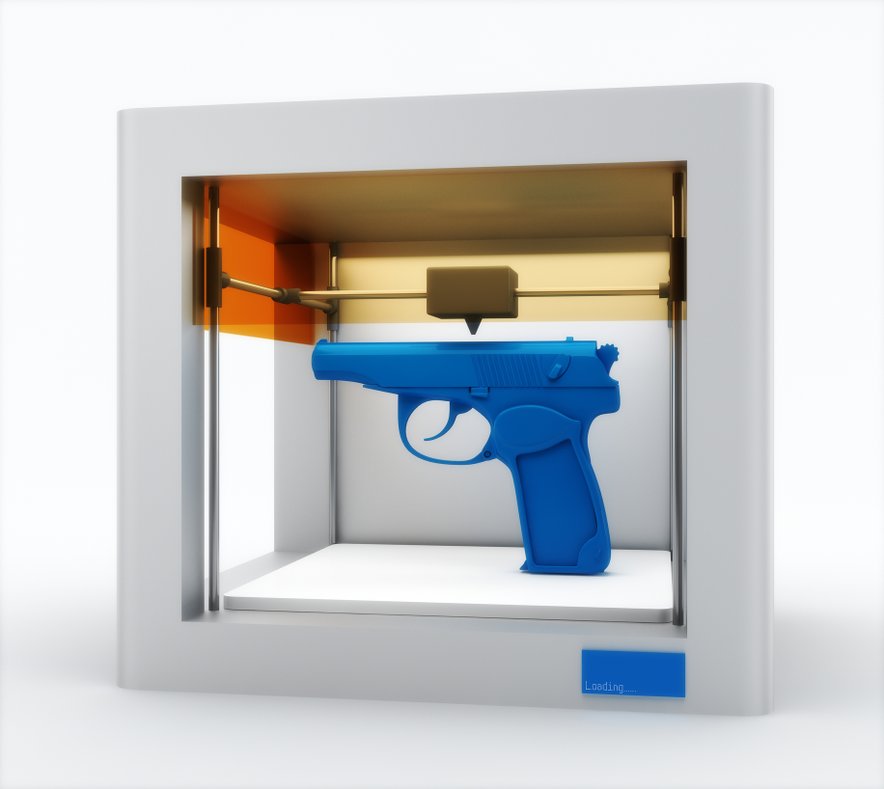 The Yoshee Six Shooter is a revolver-style weapon that has multiple barrels and can fire multiple shots without reloading. It includes a 3D printed grip, hammer, spring, barrel, and barrel holder. A metal screw is used as a firing pin to strike the rim of the bullets.
The Yoshee Six Shooter is a revolver-style weapon that has multiple barrels and can fire multiple shots without reloading. It includes a 3D printed grip, hammer, spring, barrel, and barrel holder. A metal screw is used as a firing pin to strike the rim of the bullets.
In November 2015, an engineering student called James Patrick has built a 3D printable revolver that uses a rubber band and a nail to fire .22 bullets. The revolver called PM522 Washbear can hold six or eight bullets and can shoot them in a row. This is not the first 3D printed gun made by Patrick who also made a previous model (single shot) called the Songbird.
In January 2016, the now-famous Derwood, 3D printed a new gun of its design, the ‘Shuty MP-1’. This 3D printed gun is a 9 mm semi-automatic pistol made from 95% 3D printed parts.
However, the remaining components and most complex parts of the 3D printed gun are made of metal: store-bought Glock barrel, hammer, firing pin, bolts, and springs.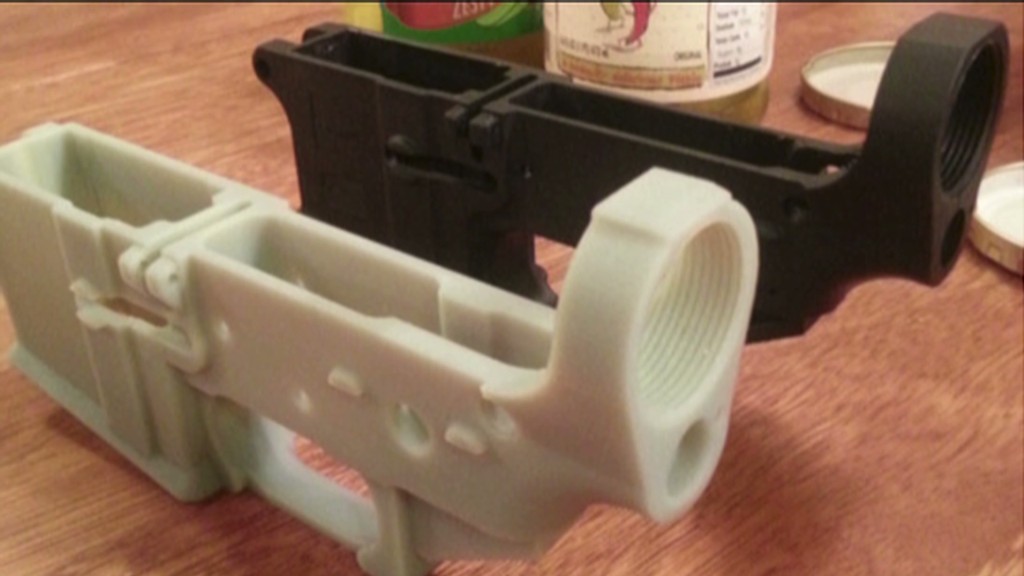 Derwood has been able to shot more than 600 hundred cartridges with his Shuty MP-1.
Derwood has been able to shot more than 600 hundred cartridges with his Shuty MP-1.
According to him, the plastic holding the barrel starts to melt after about 18 shots so it is better to let the gun cool off regularly.
The legal issues of 3D printing untraceable gun parts and 3D printing gun laws
Most gun parts (magazine, pistol grip, upper receiver) can be bought online without any tracking records. But the receiver stands out as one of the most complex and important parts.
The Ghost Gunner by Defense Distributed is a CNC milling machine capable of making AR-15 lower receivers. The AR-15 is like an AR-10 but uses smaller components for firing 0.223 caliber bullets. Like other CNC mills, the Ghost Gunner uses a digital file to carve objects out of aluminum.
The Ghost Gunner produces an unserialized AR-15 lower receiver from a pre-engineered aluminum part (called 80 percent lower) in a few hours.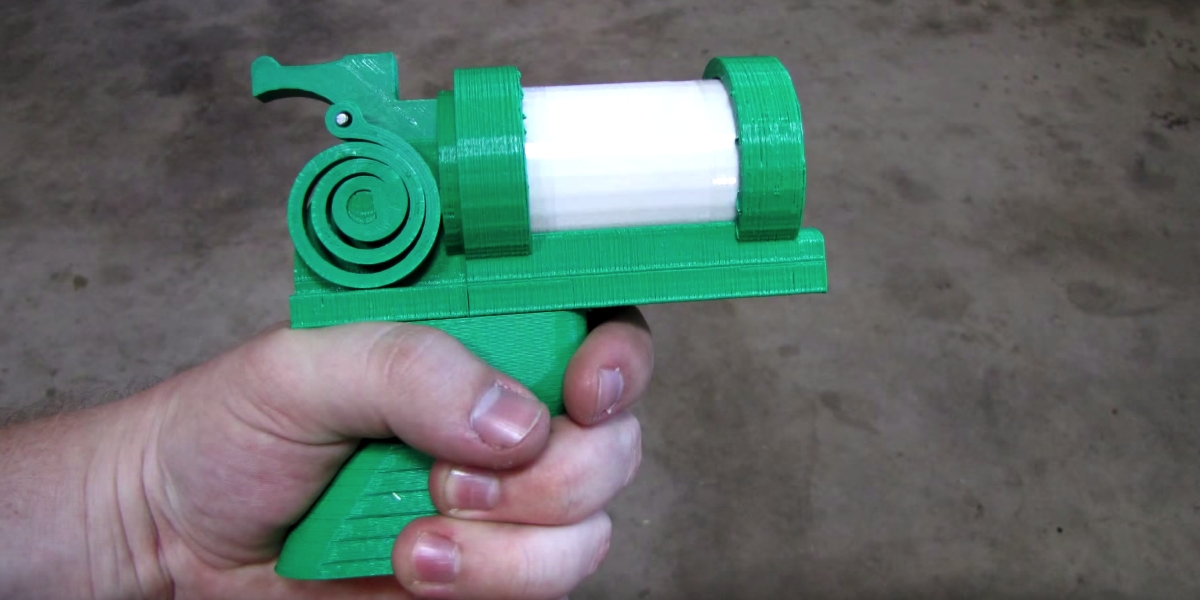
As a consequence, the rifle itself is untraceable: it is a ghost gun. Which raises major legal and security issues…
Components of the AR-15 ghost gun made by Andy Greenberg, including the homemade lower receiver. Source: WiredIn 2013, the UK Home Office introduced stricter regulations on 3D printed guns and 3D printed firearms, making it highly illegal to create, buy, or sell them or 3D printed gun parts in Great Britain.
In November 2015, the parliament of the state of New South Wales, Australia, passed one of the strongest prohibition laws against 3D-printed guns. This law called Firearms and Weapons Prohibition Legislation Amendment Bill 2015, intends to penalize both physical and digital possession of 3D printable guns the same way as any illegally owned firearm holder. More information can be found in this 3D printing Industry article.
California passed a law in July 2016 requiring anyone who makes or assembles a homemade firearm to apply for a serial number or “other mark of identification” from the state Department of Justice.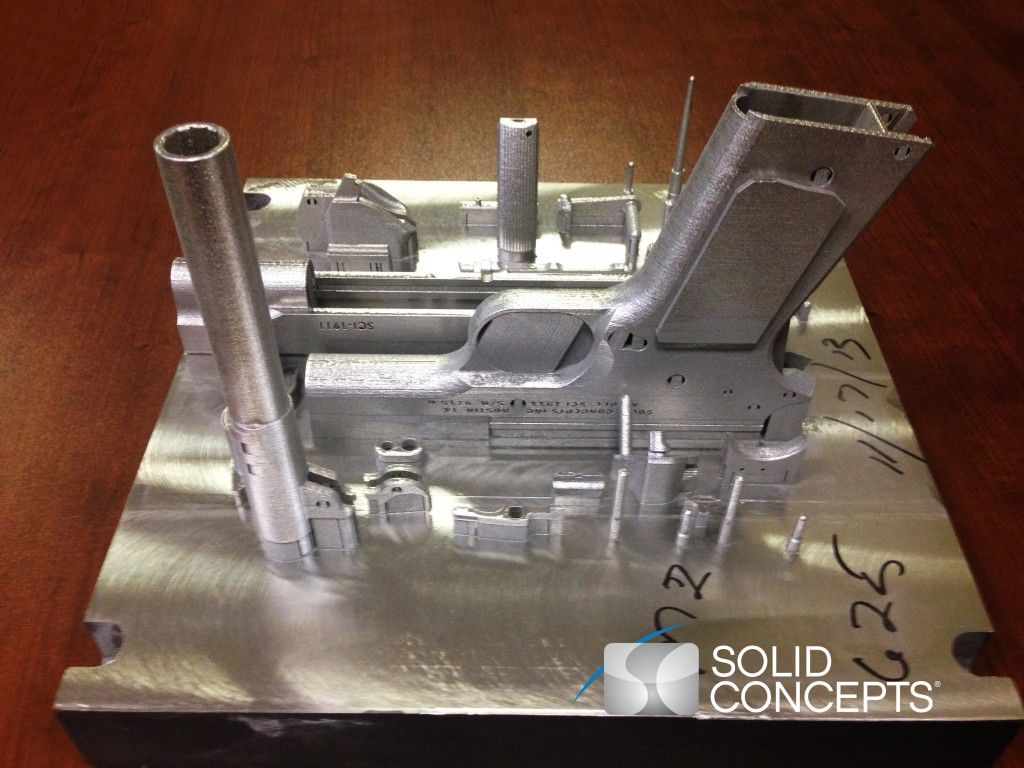
Around Asia, notable laws on 3D printed guns include Singapore, where possession of a 3D printed gun is punishable by death.
In 2017, China introduced the Chongqing regulation which required manufacturers involved in 3D printing to register with the government to help prevent 3D printing technology from being used to produce illegal items (including blueprints) such as firearms.
As of 1st August 2018, Defense Distributed is again allowed to publish designs for 3D printed guns after the US Department of State agreed to waive its prior 2015 restraint order against Cody Wilson and Defense Distributed. Therefore individuals are allowed to freely publish designs and other technical files about 3D printed guns in the United States.
3D-printed guns are back, and this time they are unstoppable
Jake Hanrahan
Business
A decentralised network of gun-printing advocates is mobilising online, they're anonymously sharing blueprints, advice and building a community. There's no easy way they can be halted
A new network of 3D-printed gun advocates is growing in America – and this time things are different. Unlike previous attempts to popularise 3D-printed guns, this operation is entirely decentralised. There’s no headquarters, no trademarks, and no real leader. The people behind it reckon that this means they can’t be stopped by governments.
“If they [the government] were to come after me, they’d first have to find my identity,” says Ivan the Troll, a member of the group. “I’m one of many, many like-minded individuals who’re doing this sort of work.”
Known only by his online moniker, Ivan the Troll is the de facto spokesman of an underground wave of 3D-printing gunsmiths.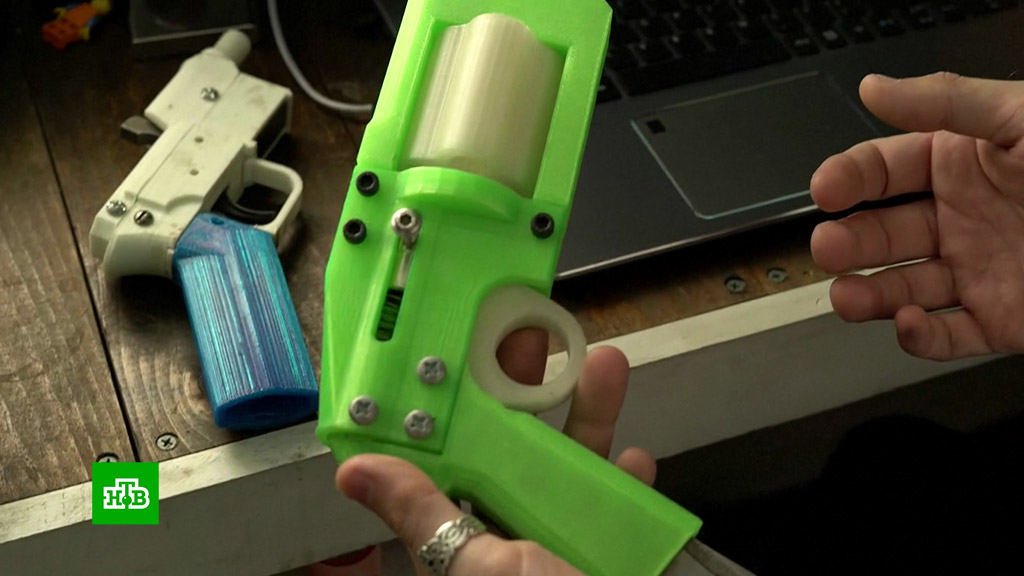 Ivan says he knows of at least 100 people who are actively developing 3D-printed gun technology, and he claims there are thousands taking part in the network. This loose-knit community spans across the whole world.
Ivan says he knows of at least 100 people who are actively developing 3D-printed gun technology, and he claims there are thousands taking part in the network. This loose-knit community spans across the whole world.
They communicate across several digital platforms, including Signal, Twitter, IRC, and Discord. They critique each other's work, exchange 3D gun CAD files, offer advice, talk theory, and collaborate on future blueprints. These 3D-printed gun enthusiasts – who share similar ideas and political viewpoints on gun control – mostly found each other online via gun control subreddits and forums.
Ivan is just one small part of this network. He says he is from Illinois, and is of “college age”, but otherwise he remains mostly anonymous, to lie low. At the same time though, he’s launched bombastic PR videos demonstrating the new 3D-printed gun parts he’s created in his garage, including a Glock 17 handgun frame.
One of his most recent videos shows the polymer Glock 17 frame in various stages of production in his workshop.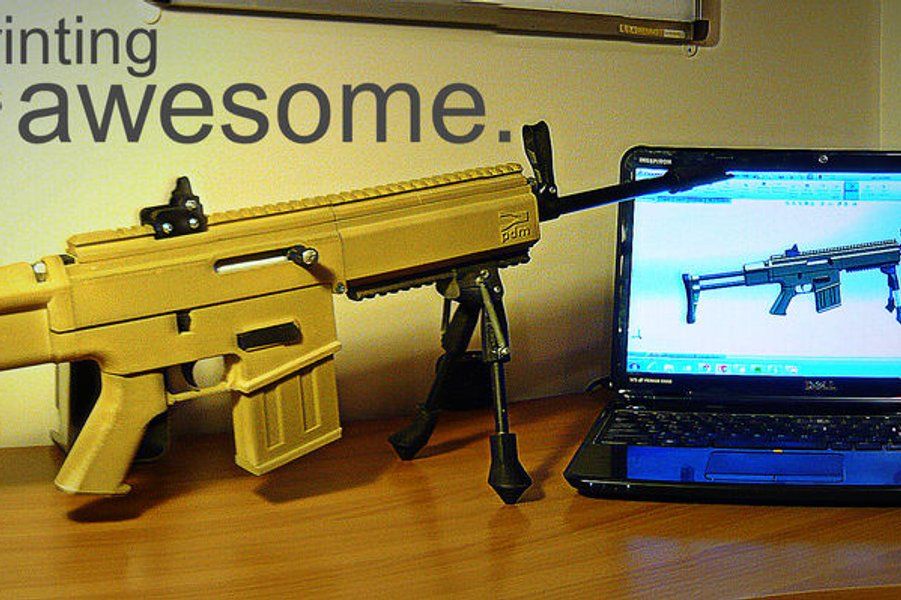 The footage is set to fast-paced synthwave music and is run through a trendy VHS filter – the aesthetics are important. Toward the end, Ivan fires several rounds with the fully built handgun, as text flashes up saying “ANYONE CAN MAKE IT”, “LIVE FREE OR DIE”, and “GO AHEAD TRY TO STOP THIS YOU FILTHY STATISTS”. He’s also uploaded the complete CAD reference model designs for a 3D-printed AR-15 assault rifle to his file-sharing space online. It’s clear Ivan is trying to provoke his detractors as much as possible.
The footage is set to fast-paced synthwave music and is run through a trendy VHS filter – the aesthetics are important. Toward the end, Ivan fires several rounds with the fully built handgun, as text flashes up saying “ANYONE CAN MAKE IT”, “LIVE FREE OR DIE”, and “GO AHEAD TRY TO STOP THIS YOU FILTHY STATISTS”. He’s also uploaded the complete CAD reference model designs for a 3D-printed AR-15 assault rifle to his file-sharing space online. It’s clear Ivan is trying to provoke his detractors as much as possible.
In February of this year, Ivan and his group decided to name themselves “Deterrence Dispensed”, which is a tongue-in-cheek nod to the notorious Defence Distributed – a 3D-printing gun company formerly run by Texan crypto-anarchist Cody Wilson.
Most Popular
In September 2018, Wilson, 30, was arrested and charged with sexual assault against a minor. He is alleged to have paid $500 to have sex with a 16-year-old girl in his home city of Austin, Texas.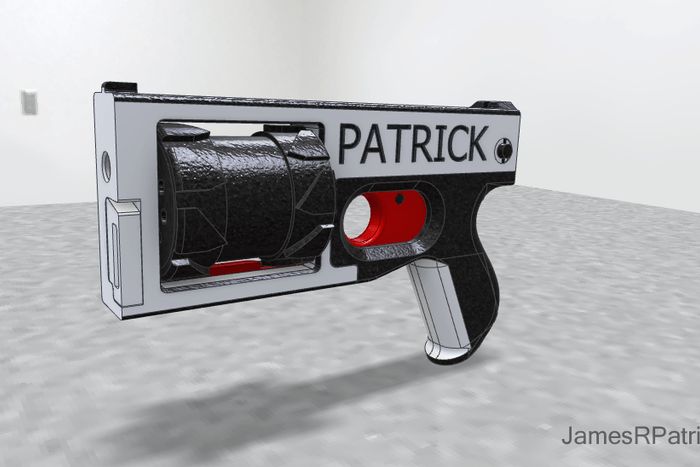 Needless to say, this arrest effectively took Wilson out of the 3D-printed gun world entirely. Many of the people who looked up to him were either disgusted or realised that his time was up. He stepped down from Defence Distributed, which was before seen as the driving force behind 3D-printed guns since it launched in 2012. Wilson was released on a $150,000 bail, but has remained silent since.
Needless to say, this arrest effectively took Wilson out of the 3D-printed gun world entirely. Many of the people who looked up to him were either disgusted or realised that his time was up. He stepped down from Defence Distributed, which was before seen as the driving force behind 3D-printed guns since it launched in 2012. Wilson was released on a $150,000 bail, but has remained silent since.
Defence Distributed has many other ongoing legal battles. Attorney generals from more than 20 US states are currently in the process of suing the company – which has countersued – in a bid to reverse a court win that momentarily allowed Defence Distributed to upload and share 3D-printed gun blueprints online. Their headaches are long, drawn out, and ongoing. (New York State has just passed a law to ban 3D-printed guns).
For Ivan’s group, Deterrence Dispensed, none of this is relevant. They’re uploading these files individually on services such as Spee.ch, a media-hosting site underpinned by the LBRY blockchain, and they aren’t waiting for anyone to give them permission.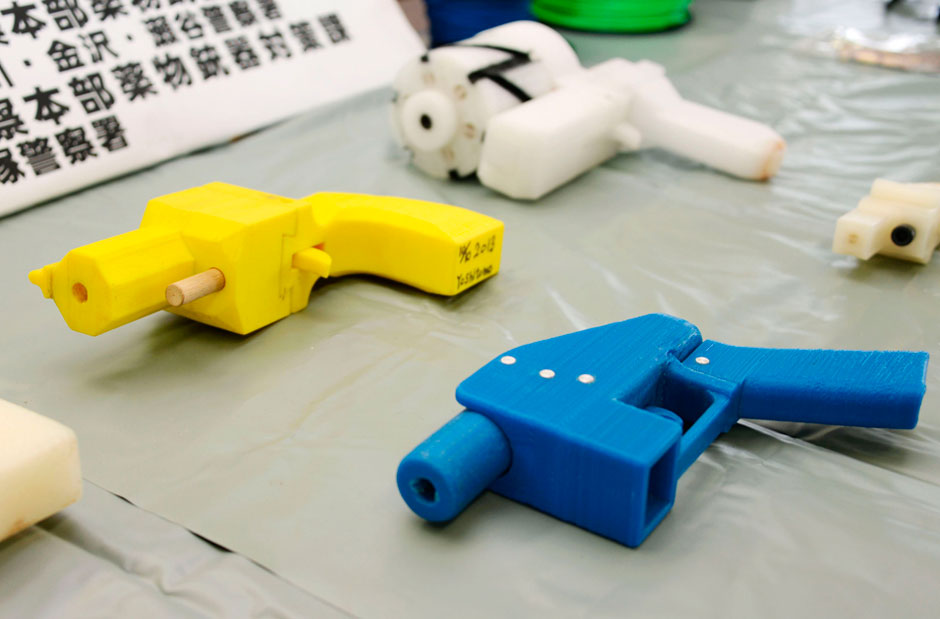 They’ve made their own 3D-printed gun designs, modified old ones, and are keeping all the Defence Distributed ones available for free too.
They’ve made their own 3D-printed gun designs, modified old ones, and are keeping all the Defence Distributed ones available for free too.
“Even if there was no government telling me I couldn’t do this, I think that I would still do it,” Ivan says. “Some people get a kick out of video games, I like spending hours and hours drawing stuff on CAD.”
Ivan isn’t just “drawing stuff on CAD” though. He’s providing free files to help anyone with a half-decent FDM (Fused Deposition Modeling) 3D printer and some hand tools to make a workable handgun. Once the CAD file is downloaded, it’s opened in a “slicer” program that translates the CAD files into instructions that the 3D printer can understand. Once the 3D-printed gun parts are ready, they can be assembled into a fully workable gun.
The CAD gun designs put out by Deterrence Dispensed are so well-made, according to Ivan, that they’re not just “workable”, but superior. “Our AR15 CAD model is the best in the public domain without a doubt,” says Ivan.
Most Popular
Despite being overtly antagonistic Ivan has had no real run-ins with the authorities so far. His Twitter account was permanently suspended after New Jersey state senator Bob Menendez lobbied for it to be taken down, but as far as the government and law enforcement goes, things have been mostly quiet.
Ivan sees himself, and other radical 3D-printing gun groups such as FOSSCAD (another decentralised group of 3D-printing enthusiasts who focus on firearms), simply as hobbyists who’ve chosen the “wrong” thing to build. He sees 3D-printed guns as somewhat of a paper tiger. He points out that while 3D-printed gun parts can be built to kill people, zip guns (homemade firearms built from crude materials) have been around for decades and are arguably more deadly. The hysteria and backlash, to Ivan at least, is completely misplaced.
“Take it from me as someone who’s printed a gun. Making a slam-fire shotgun is 100 times easier, 100 times quicker, and about 100 times cheaper than printing a [regular] gun.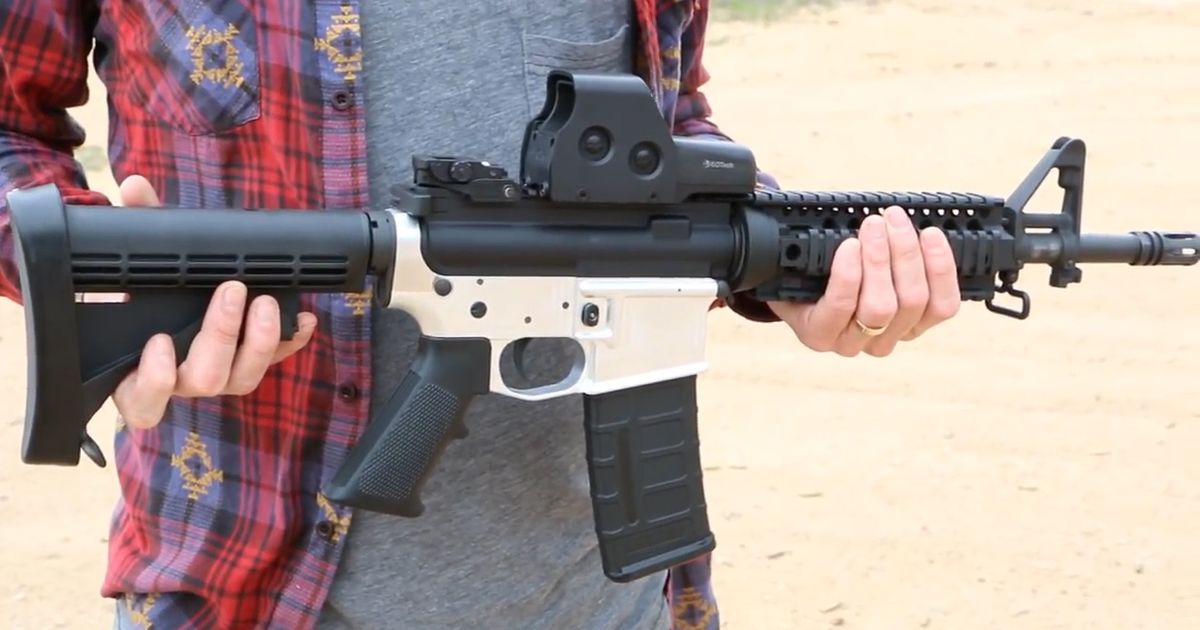 For eight dollars I can pop down to Home Depot and build a shotgun.”
For eight dollars I can pop down to Home Depot and build a shotgun.”
Already in 2019, 156 people have already been killed in US mass shootings, and gun-related deaths are at a 20-year high. In March, a terrorist armed with two semi-automatic rifles and two shotguns killed 51 people in an anti-muslim attack in Christchurch, New Zealand. In such circumstances, do the US (and the world) really need more guns – zip gun, 3D-printed, or otherwise? Ivan thinks yes.
“The cops killed more people alone last year than all active shooter incidents in the last ten years,” he says. “We live in a society, in America, where you run the risk of a cop blowing your ass up for no specific reason. You don’t even have to present a threat to them. A cop can kill you and get away with it just because he really wanted to do it.”
He then went on to cite the many police shootings of unarmed black men in American, specifically mentioning Stephon Clark. Clark, 22, was shot to death by police in his own back garden while holding nothing but a mobile phone. “I believe it is inherently important that … you should be able to own a gun,” Ivan continued. “You should be able to own the same legal force that the cops are using to control you.”
“I believe it is inherently important that … you should be able to own a gun,” Ivan continued. “You should be able to own the same legal force that the cops are using to control you.”
Most Popular
But the facts are clear. The majority of gun deaths around the world come from just six countries – one of which is the US. And analysis from Harvard University shows where there are more guns, more murders happen.
Anti-gun campaigners, obviously, disagree with the notion of a downloadable gun. Avery Gardiner, the co-president of the Brady Campaign, has said 3D-printed guns present a "supreme threat to our safety and security". Speaking after a court decision in August Gardiner said: "Already, there have been a wave of dangerous actors seeking to illegally post the blueprints online".
A mix of a libertarian attitude and the rewarding hobby aspect of designing and creating something is often what drives members of these decentralised 3D-printed gun networks to do what they do – that is, uploading schematics, sharing them, improving designs, and making 3D-printed gun work more easily accessible while remaining largely under the radar.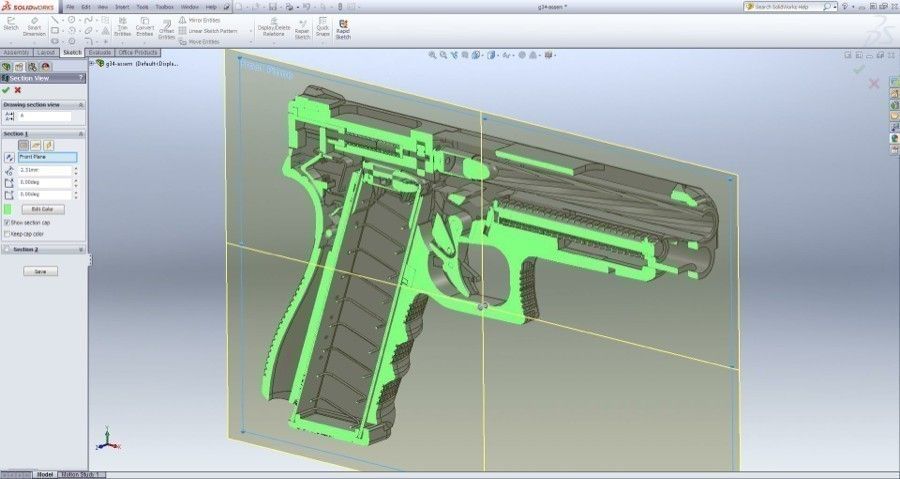 Ivan claims he does this for a love of freedom and “radical” belief in the US first and second amendment: free speech and the right to bear arms.
Ivan claims he does this for a love of freedom and “radical” belief in the US first and second amendment: free speech and the right to bear arms.
He takes this to such a radical degree though, that he even theorises he should technically be able to have his own Tomahawk Missiles, saying that they would be safer in his hands than in those of the US Military and its allies – given the country's track record for accidentally targeting civilians, including a wedding party in Afghanistan and a school bus in Yemen.
Referring to the mounting list of civilian killings carried about by US forces in foreign wars, Ivan sounds at times more like a radical leftist than the right wing “gun nut” many in America label him as. He claims not to have any specific ideology though, saying: “I get to be my own special snowflake.”
As of now, Ivan the Troll, Deterrence Dispensed, and the thousands many more 3D-printed gun enthusiasts connected to each other worldwide, have essentially let the cat out the bag.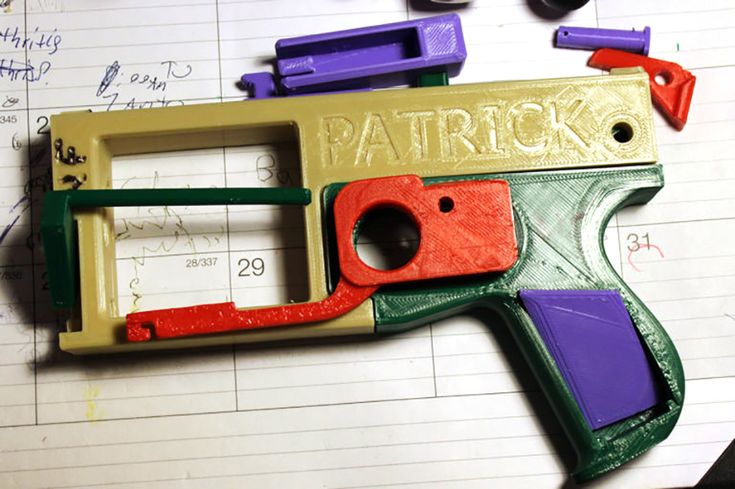 There is no way to stop the anonymous file sharing of 3D-printed guns online. Whether they’re just pretending to be doing this for reasons of liberty or otherwise, their message is clear: it’s already too late to stop.
There is no way to stop the anonymous file sharing of 3D-printed guns online. Whether they’re just pretending to be doing this for reasons of liberty or otherwise, their message is clear: it’s already too late to stop.
More great stories from WIRED
– Why parents should stop worrying about videogame addiction
– Why are we having less sex? Blame honesty
– Jeff Bezos wants to colonise space, but he's destroying Earth
– Why staff on the autism spectrum are a huge asset
– Why Tim Cook is a better Apple CEO than Steve Jobs
TopicsEngineeringPolitics
More from WIRED UKculture
37 of the Best Films on Netflix This Week
Stuck for a good film on Netflix? Here are our picks for the best Netflix movies to feast your eyes on, updated weekly.
By WIRED
gear
This Really Is the Greatest Bag Ever Made
In my 10 years as a Gear editor at WIRED, Filson’s Ballistic Nylon Duffle Pack is hands down my favorite gear item.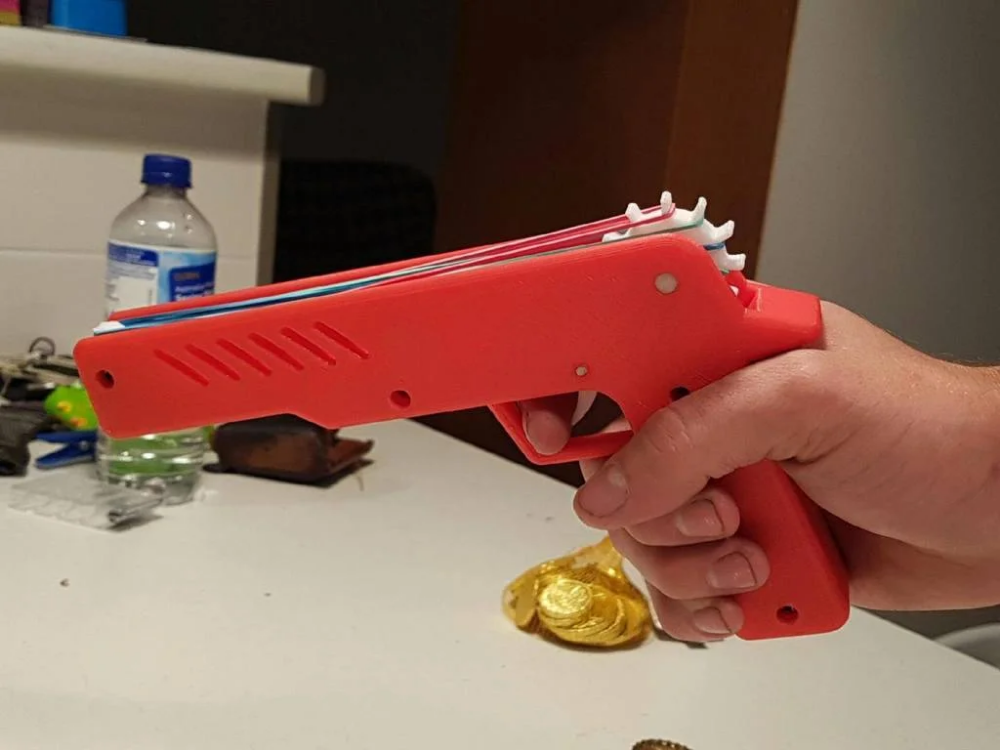
By Jeremy White
Drawings for printing weapons on a 3D printer provoked new lawsuits in the US - RBC
adv.rbc.ru
adv.rbc.ru
adv.rbc.ru
Hide banners
What is your location ?
YesSelect other
Categories
Euro exchange rate as of December 14
EUR Central Bank: 66.7 (+0.43) Investments, 13 Dec, 19:29
Dollar exchange rate on December 14
USD Central Bank: 63.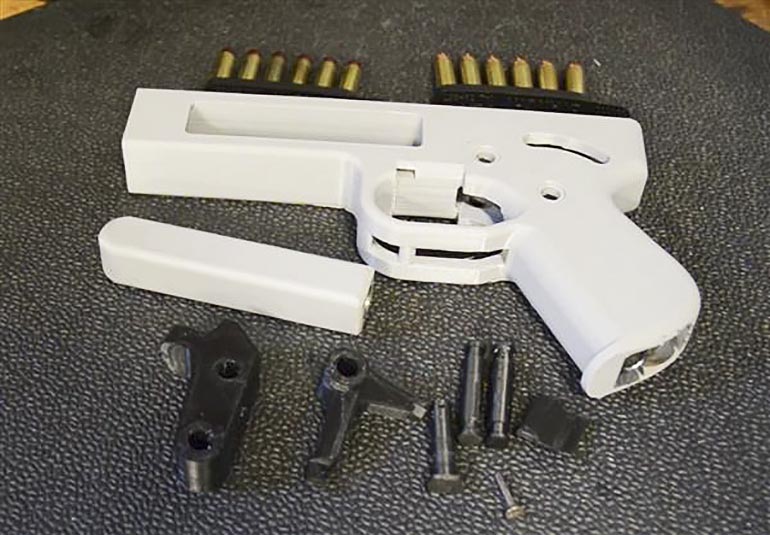 21 (+0.44) Investments, 13 Dec, 19:29
21 (+0.44) Investments, 13 Dec, 19:29
Messi refuses to call Qatar his best World Cup of his career Sport, 00:51
Saldo condemned the visit of UN Deputy Secretary General Martin Griffiths to Kherson Politics, 00:44
Messi took Argentina to the final. What happens at the World Cup in Qatar Sports, 00:31
adv.rbc.ru
adv.rbc.ru
Messi was named the best player in the World Cup semi-finals Argentina - Croatia Sports, 00:17
Getting into the right environment: important factors in motivating a child to succeed RBC and AFI Park Vorontsovsky, 00:16
The Pentagon denied the illegal use of weapons in Ukraine Politics, 00:15
Analysts named the most expensive shopping streets in Russia Real estate, 00:05
Explaining what the news means
RBC Evening Newsletter
Subscribe
Favorite against upstart.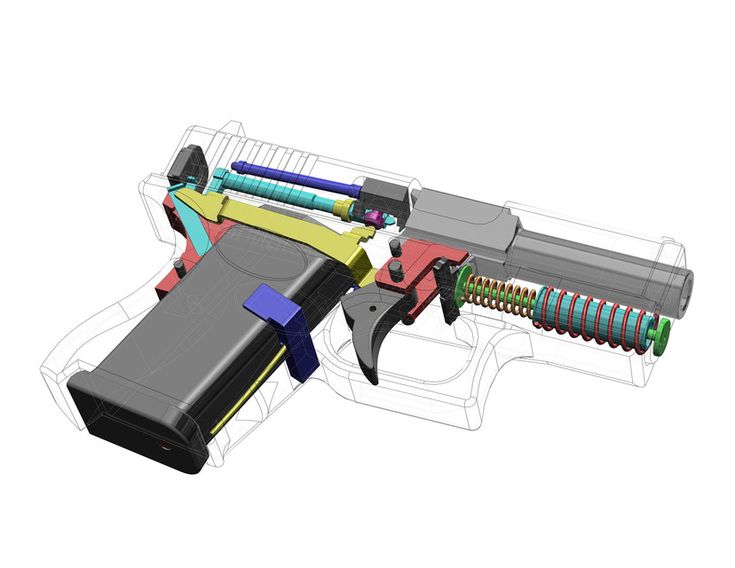 Will Morocco stop France on their way to the World Cup final? Sport, 00:00
Will Morocco stop France on their way to the World Cup final? Sport, 00:00
RSPP experts named barriers to import substitution in the defense industry Economy, 00:00
The volume of unsold apartments in new buildings reached a record level Business, 00:00
The US Ambassador to NATO pointed out the "real shortage" of weapons for Kyiv Politics, Dec 13, 11:55 pm
Argentina defeated Croatia and became the first World Cup finalist Sports, 13 Dec, 23:55
How big data analytics solves economic problems.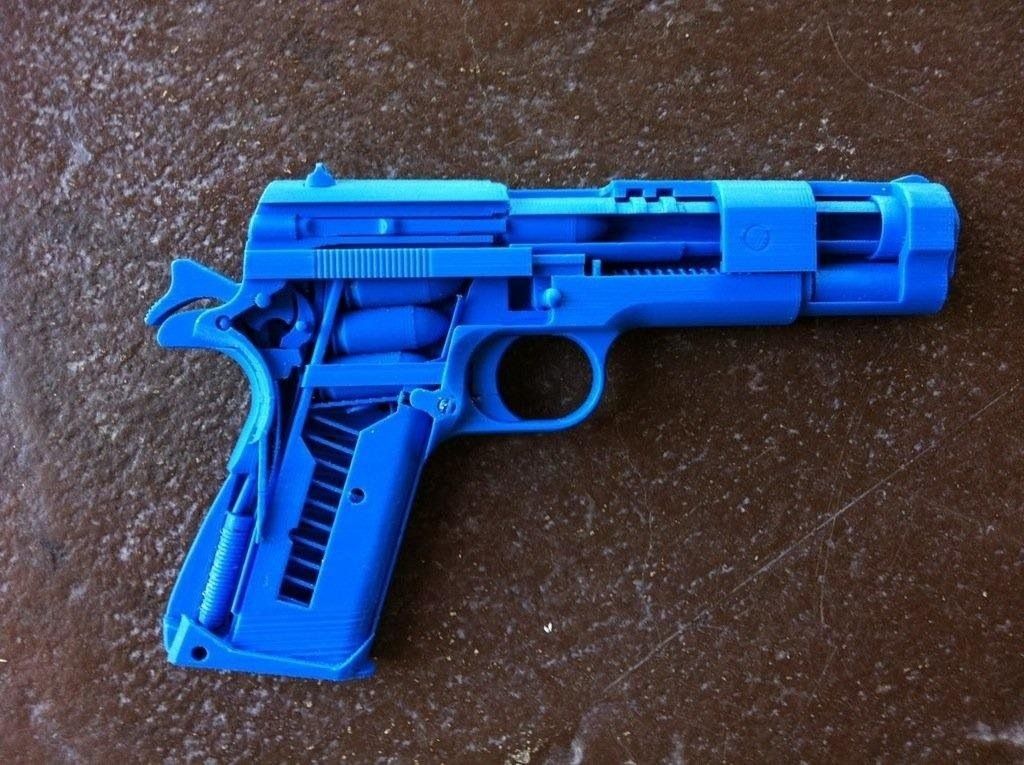 Cases RBC and SberAnalytika, 13 Dec, 23:49
Cases RBC and SberAnalytika, 13 Dec, 23:49
Macron announced the allocation of €1 billion to Ukraine following a conference in Paris Politics, Dec 13, 11:45 pm
adv.rbc.ru
adv.rbc.ru
adv.rbc.ru
Another 11 US states have filed lawsuits against the administration of Donald Trump. They are asking for a final ban on the distribution of blueprints for 3D printed weapons
3D printed weapons (Photo: Eric Gay / AP)
Another 11 US states are suing the Trump administration over its upcoming 3D printed weapon drawings online. According to Reuters, we are talking about the states of California, Colorado, Delaware, Hawaii, Illinois, Iowa, Minnesota, North Carolina, Rhode Island, Vermont and Virginia.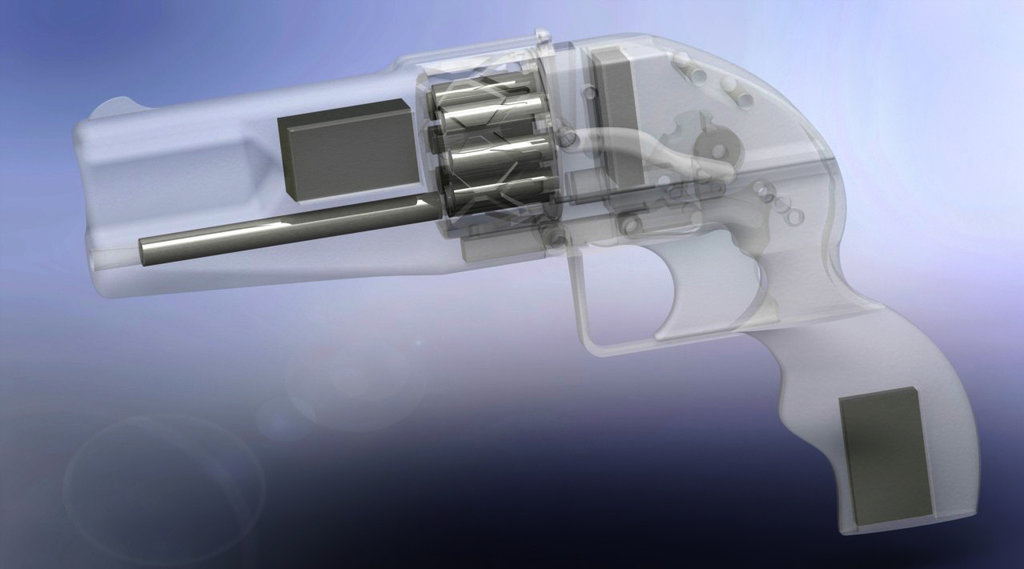
The plaintiffs allege that the release of the blueprints will allow criminals easy access to weapons. In their lawsuits, they demand a final ban on the distribution of such drawings.
In the meantime, the United States has a temporary ban on the publication on the Internet of drawings of weapons for printing on 3D printers. The decision was made last Tuesday a few hours before the official publication of the drawings on the Internet.
We are talking about the materials of the organization Defense Distributed. She previously announced that on August 1 she would publish drawings for making weapons using 3D printers on the Web. This happened after the organization obtained permission from the US authorities in June to distribute such drawings. However, the publication began a little earlier than the official deadline, and many managed to download the drawings. This was the reason for filing lawsuits from eight states and the District of Columbia against Defense Distributed itself, as well as the Trump administration.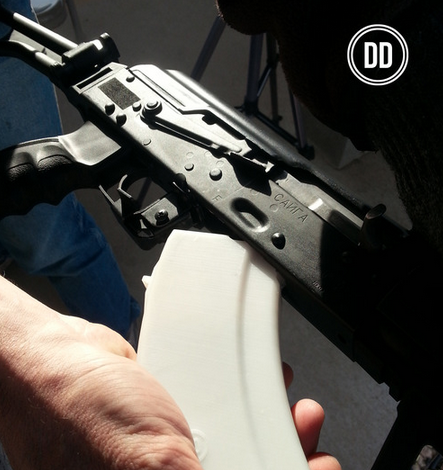
Following a court ruling temporarily blocking the publication of blueprints, Defense Distributed removed them from the internet.
Defense Distributed founder Cody Wilson believes that access to online blueprints should be allowed under the First and Second Amendments to the US Constitution, which guarantee freedom of speech and the right to bear arms, respectively. The judge, when ruling on a temporary ban on the publication of data, considered that this could cause "potential irreparable harm" to US citizens.
The next hearing in this case will take place later in August.
These are blueprints for a 3D printed plastic version of the AR-15 semi-automatic rifle. The traditional version of this type of weapon has been repeatedly used in mass shootings in the United States.
8% - that's the rate!
Learn about the contribution
2.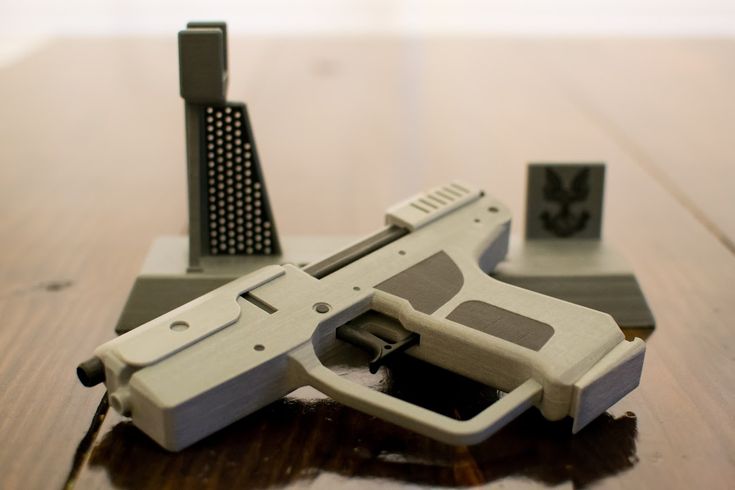 3% - that's an increase!
3% - that's an increase!
Learn about the contribution
10.3% - that's a win!
Learn about the contribution
This is DISCOVERY
Learn about the contribution
Authors
Tags
3D Printer Pistols Are Back and Unstoppable / Sudo Null IT News They anonymously share drawings, tips, and create their own community. And there is no easy way to stop them.
In the United States, a network of supporters of printing weapons on a 3D printer is growing again - but now everything is different. Unlike previous attempts to popularize weapons that can be printed on a 3D printer, this operation is completely decentralized.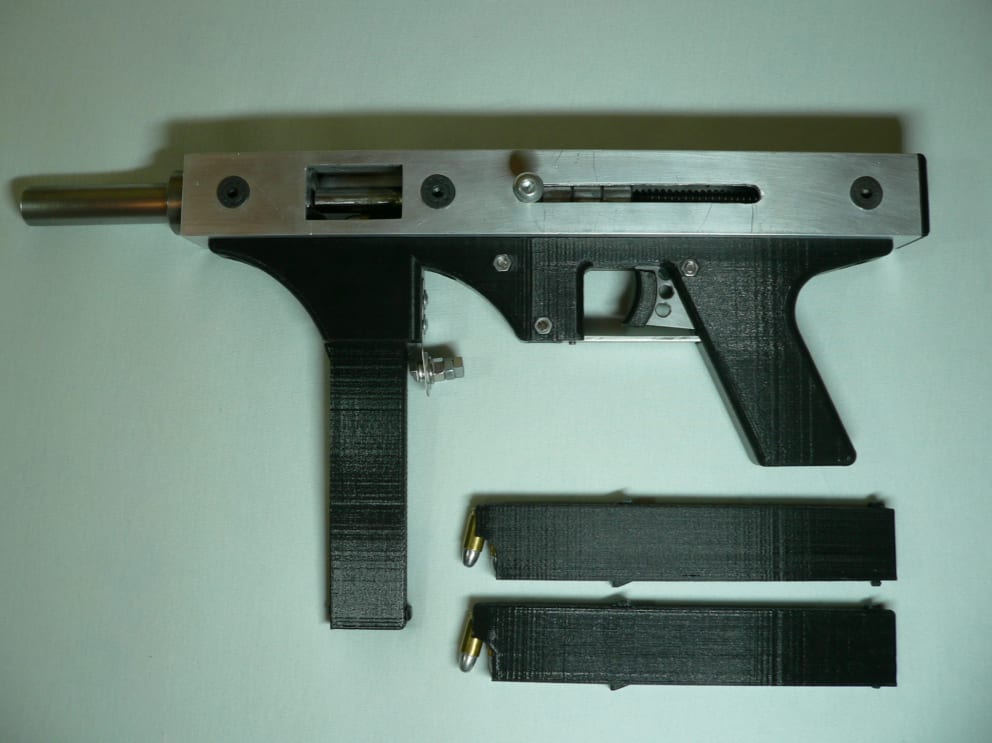 It has no headquarters, no trademarks and no leader. And the people behind it believe that this state of affairs guarantees the inability of governments to stop them.
It has no headquarters, no trademarks and no leader. And the people behind it believe that this state of affairs guarantees the inability of governments to stop them.
"If they want to come after me, they'll have to find me first," says Ivan the Troll, a member of the group. “I am one of many like-minded people doing this work.”
The troll Ivan is known only by his network pseudonym, and is the de facto representative of an underground organization of gunsmiths working on 3D printers. Ivan says he knows at least 100 people actively developing weapon 3D printing technology, and claims that thousands of people are involved in the network. And this loosely connected network spans the entire world.
They communicate on different digital platforms - Signal, Twitter, IRC and Discord. They critique each other's work, trade weapon CAD files, give advice, talk theory, and collaborate on new blueprints. Enthusiasts of printed guns - who share similar ideas and political views on gun control - mostly meet on subreddits and forums dedicated to this topic.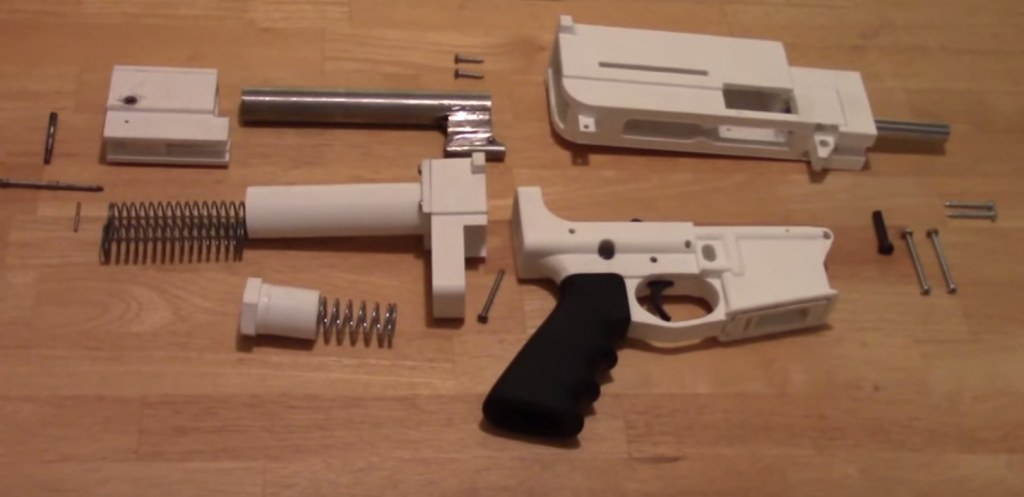
Ivan himself is only a small part of this network. He says he comes from Illinois and is about the age of a "college student," but otherwise keeps quiet about himself to keep his head down. In doing so, he launched some amazing commercials showing new handgun parts he printed out in his garage, including the Glock 17 pistol frame.0003
On the last video [ , the video is deleted from YouTube, but the videos can be found on other hostings / approx. transl. ] shows a Glock 17 resin frame in various stages of production in the workshop. The footage is sounded with fast synthwave music, and passed through a VHS filter for greater aesthetics. By the end of the video, Ivan fires several shots from a ready-made pistol, and the captions that appear at the same time read: "Anyone can do this", "Live free or die", "Let's try to stop this, you dirty etatists." He also uploaded a complete CAD model of the AR-15 assault rifle to a file sharing site. It is clear that Ivan is trying to provoke his detractors to the maximum.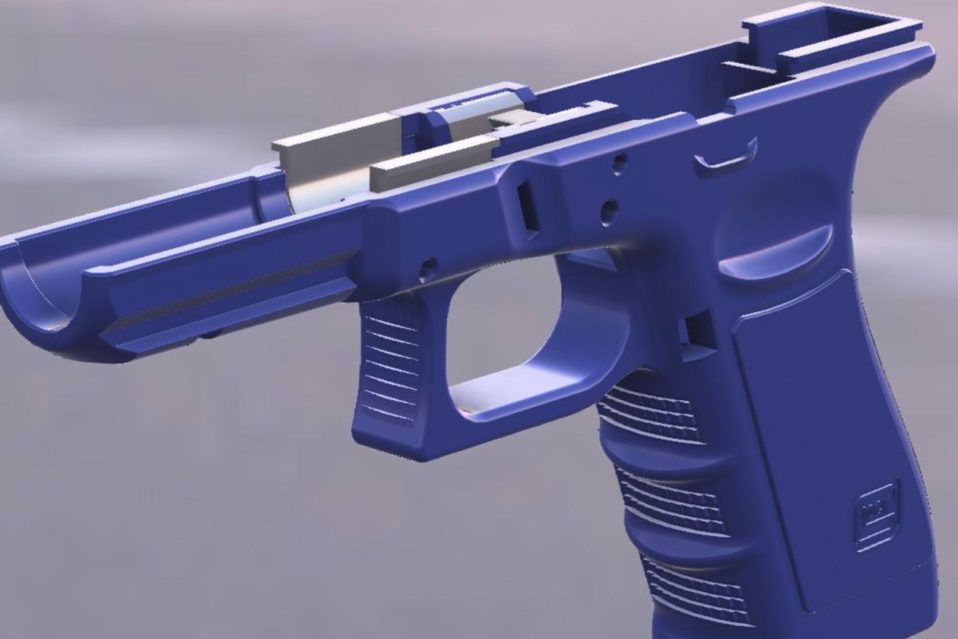
In February of this year, Ivan and his group decided to call themselves "Distributed Deterrence" transl. ], which is an allusion to the name of the company Defense Distributed [distributed protection], which was previously headed by Texas crypto-anarchist Cody Wilson.
In September 2018, Wilson, aged 30, was arrested and charged with sexually abusing a minor. He allegedly paid $500 for sex with a 16-year-old girl in his hometown of Austin, Texas. Naturally, this arrest took Wilson completely out of the world of 3D printed guns. Many of the people who admired him were either disgusted or realized that his time had passed. He retired from Defense Distributed, which used to be the main driver behind 3D weapon printing, since its inception in 2012. Wilson was released on $150,000 bail, but hasn't been in touch since.
Defense Distributed has many other legal issues. Attorneys in more than 20 US states are currently suing the company - which has filed counterclaims - in an attempt to undo the company's win in court that allowed the company to upload and share 3D weapon blueprints online.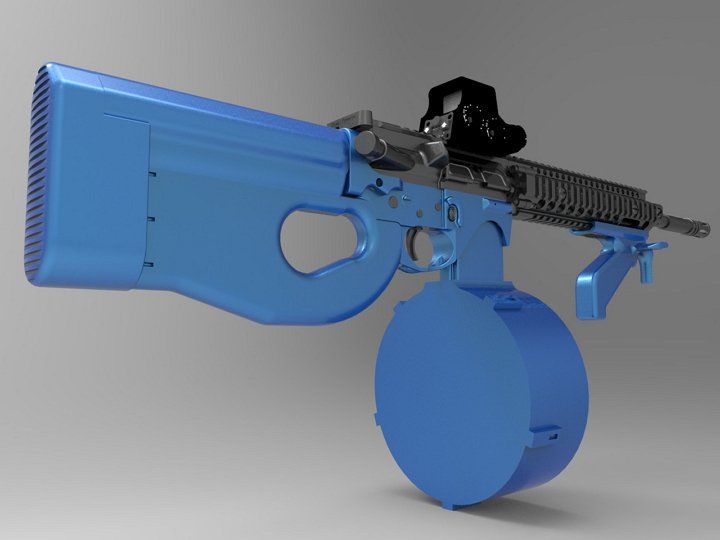 All these processes are long and tedious (New York State just passed a law to ban 3D printed weapons).
All these processes are long and tedious (New York State just passed a law to ban 3D printed weapons).
But for Ivan's group, Deterrence Dispensed, none of that matters. They upload their files singly to services like Spee.ch, a media hosting site powered by the LBRY blockchain, without waiting for anyone's permission. They themselves make blueprints for printing weapons, tweak old ones, and distribute all blueprints from Defense Distributed for free.
“Even if no government forbade me to do this, I think I would still do it,” says Ivan. “Some people enjoy video games, but I like to spend time drawing things in CAD.”
But Ivan doesn't just "draw things" in CAD. He's giving away files for free to help anyone with a decent Fused Deposition Modeling (FDM) 3D printer and certain tools build a working gun. Once the CAD file is downloaded, it is opened in a slicing program that translates the CAD files into instructions that the 3D printer can understand. After the parts are ready, they can be assembled, getting a fully working weapon.
The blueprints that Deterrence Dispensed shares with the world are so good, according to Ivan, that they are not only "working", they are of excellent quality. “Our AR15 model is the best available to the public without a doubt,” says Ivan.
Despite active antagonism with the authorities, Ivan has had no problems with them so far. His Twitter account was permanently shut down by Senator Bob Menendez of New Jersey, but so far, from the point of view of law enforcement and government, all has been quiet.
Ivan considers himself and other radical gun printing groups like FOSSCAD to be hobbyists who want to do something “wrong”. He believes that the problems of 3D printing weapons are overblown. He points out that while printable gun parts can be used to kill people, homemade guns have always existed and are probably more lethal. From his point of view, all this hysteria and backlash is directed to the wrong address.
"Trust me as a gun maker. A semi-automatic shotgun is 100 times easier, faster and cheaper to make than a regular pistol. I can go to Home Depot and buy a shotgun for $8."
I can go to Home Depot and buy a shotgun for $8."
In 2019, 156 people have already died in mass shootings in the United States, and in principle, the number of deaths related to weapons is a 20-year high. In March, a terrorist armed with two semi-automatic rifles and two shotguns killed 51 Muslims in Christchurch, New Zealand. Does the US (and the rest of the world) need more weapons in these circumstances, homemade, printed or otherwise? Ivan thinks so.
“The police killed more people last year than in all the mass shootings in the last 10 years,” he says. “We in America live in a society where there is always the risk that a cop will shoot your ass off for nothing. And you don't even have to pose a threat to him. A cop can kill you just because he wants to, and he can get away with it."
He cited many examples of policemen shooting at unarmed black Americans, especially Steven Clarke. Clark, 22, was shot and killed by police in his garden with only his cell phone in hand.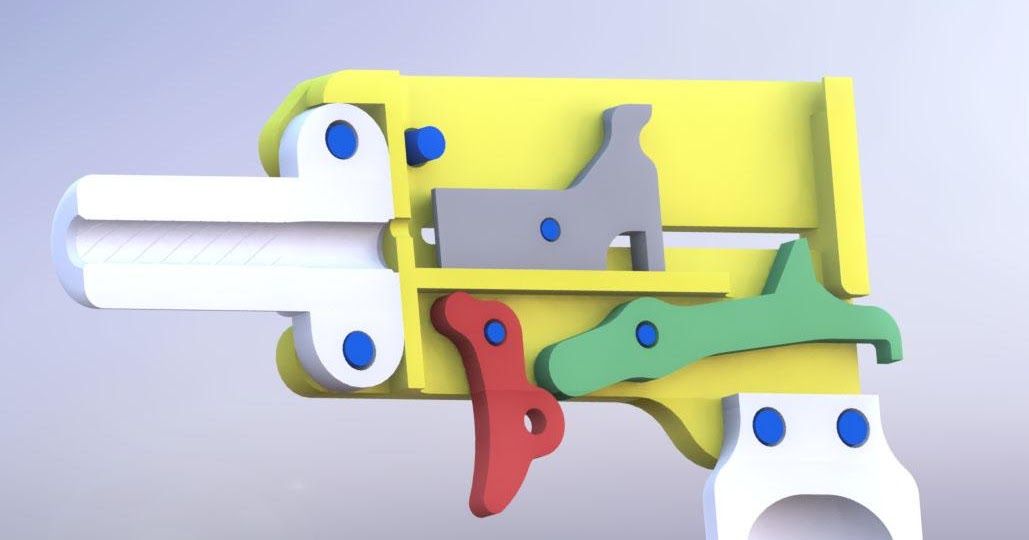 “I think it’s extremely important that everyone has the opportunity to have a gun,” Ivan continued. “Everyone should have the same legal options as the cops using them to control you.”
“I think it’s extremely important that everyone has the opportunity to have a gun,” Ivan continued. “Everyone should have the same legal options as the cops using them to control you.”
However, the facts are undeniable. Slightly more than half of deaths from firearms occur in six countries, incl. in the USA. And analysis from Harvard University shows that the more guns there are, the more murders there are.
Opponents of weapons, of course, are not satisfied with the concept of a downloadable pistol. Avery Gardiner, one of the presidents of the Brady Campaign, said that 3D-printed weapons "pose the greatest threat to our security." Following the court ruling in August, Gardiner said, "There is already a wave of dangerous individuals trying to illegally post blueprints on the Internet."
Members of this decentralized 3D printed weapon society are often motivated by a mixture of libertarian views and the pleasure of designing and creating tangible items as a hobby.